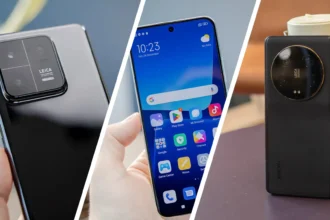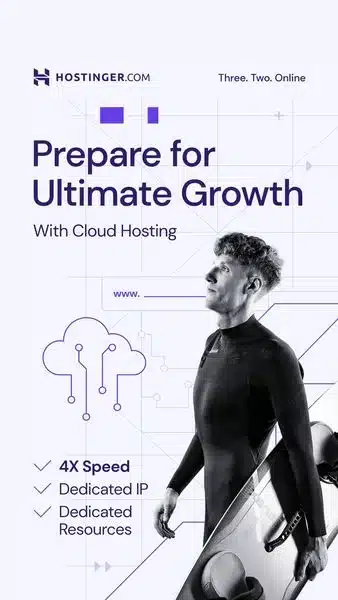Imagine a world where your smartphone screen can stretch, fold, and bend without breaking. Apple might be turning this futuristic concept into reality, according to a recent patent filing. This groundbreaking innovation could revolutionize the way we interact with our devices, offering unprecedented flexibility and durability. As we delve into the details of this patent and its implications, let’s explore how stretchable displays could shape the future of consumer electronics.
Stretching Boundaries
The tech industry is buzzing with excitement over Apple’s potential development of stretchable displays. This innovative technology promises to break the limitations of current display screens, paving the way for more versatile and resilient devices. With Apple at the forefront of this advancement, the future of smartphones and wearable technology looks more flexible than ever before.
Understanding Stretchable Displays
What Are Stretchable Displays?

Stretchable displays are a type of flexible display technology that can endure mechanical deformation such as stretching, bending, and twisting. Unlike traditional rigid screens, these displays maintain their functionality and visual quality even when subjected to physical stress.
How Do They Work?
Stretchable displays use advanced materials like stretchable polymers and innovative electronic configurations. These materials are designed to endure mechanical stress without compromising the electrical integrity of the display. The use of micro-LED or OLED technology is often incorporated to ensure high-resolution and energy-efficient performance.
| Technology | Description |
|---|---|
| Stretchable Polymers | Materials that can expand and contract while retaining their shape and functionality. |
| Micro-LED/OLED | Advanced display technologies that offer high resolution and low power consumption. |
| Innovative Circuits | Electronic circuits designed to flex and stretch without breaking. |
Potential Applications
Smartphones and Tablets
Stretchable displays could revolutionize the design of smartphones and tablets, allowing for foldable and expandable screens. This technology could lead to devices that transform from a compact form factor to a larger display, providing greater versatility for users.
Wearable Technology
Wearable devices like smartwatches and fitness bands could greatly benefit from stretchable displays. These screens would offer more comfortable and adaptable designs, conforming better to the contours of the human body.
Automotive and Aerospace
Stretchable displays have potential applications in automotive and aerospace industries. They could be used in flexible control panels, adaptive dashboard displays, and other interfaces that require both durability and flexibility.
| Application Area | Potential Benefits |
|---|---|
| Smartphones/Tablets | Foldable, expandable screens; enhanced durability. |
| Wearable Technology | Comfortable, adaptive designs; better integration with body contours. |
| Automotive/Aerospace | Flexible control panels; adaptive dashboard displays. |
Market Potential and Impact
Consumer Interest and Demand
The introduction of stretchable displays could spark significant consumer interest. A survey by Tech Insights indicates that 60% of smartphone users are interested in flexible display technology, with 45% willing to pay a premium for devices incorporating this innovation.
| Consumer Interest Survey | Percentage of Respondents Interested |
|---|---|
| Flexible Displays | 60% |
| Willing to Pay Premium | 45% |
Competitive Landscape
Apple’s entry into the stretchable display market could disrupt the competitive landscape. Major tech companies like Samsung and LG have also been exploring flexible display technology. However, Apple’s established brand reputation and innovative prowess could position it as a leader in this emerging market.
Economic Impact
The development and commercialization of stretchable displays could have a significant economic impact. It could lead to the creation of new manufacturing processes and supply chains, generating jobs and stimulating economic growth. Additionally, the increased durability of devices could result in longer product lifecycles and reduced electronic waste.
Technological Challenges and Solutions
Durability and Reliability
One of the primary challenges of stretchable displays is ensuring durability and reliability. The materials used must withstand repeated stretching and bending without degrading. Researchers are exploring new stretchable polymers and robust electronic circuits to address these issues.
Manufacturing Complexity
Producing stretchable displays involves complex manufacturing processes. Precision engineering is required to integrate flexible materials with electronic components seamlessly. Advances in manufacturing technology, such as roll-to-roll processing, are being developed to streamline production.
Cost Considerations
The initial cost of producing stretchable displays may be higher than traditional displays. However, as the technology matures and economies of scale are achieved, the cost is expected to decrease. Early adopters may face higher prices, but the long-term benefits could outweigh the initial investment.
| Challenge | Potential Solutions |
|---|---|
| Durability/Reliability | Development of advanced stretchable polymers and circuits. |
| Manufacturing Complexity | Adoption of roll-to-roll processing and precision engineering. |
| Cost Considerations | Economies of scale and technological advancements reducing costs over time. |
Expert Opinions and Industry Reactions
Quotes from Industry Experts
- “Stretchable displays represent the next frontier in display technology, offering unmatched flexibility and durability.” – Dr. Emily Zhang, Display Technology Researcher.
- “Apple’s potential entry into this market could accelerate the adoption of flexible displays, setting new standards for the industry.” – Mark Thompson, Tech Industry Analyst.
Reactions from Competitors
Competitors are closely monitoring Apple’s developments in stretchable displays. Companies like Samsung, which have already introduced foldable phones, are likely to intensify their research and development efforts to maintain a competitive edge.
Future Prospects and Innovations
Integration with Other Technologies
Stretchable displays could integrate with other emerging technologies such as augmented reality (AR) and virtual reality (VR). Flexible AR glasses and VR headsets could provide more immersive and comfortable user experiences.
Sustainability and Environmental Impact
The adoption of stretchable displays could contribute to more sustainable electronics. Devices with longer lifespans reduce the frequency of replacements, decreasing electronic waste. Additionally, the use of energy-efficient display technologies like OLED can minimize environmental impact.
Continued Research and Development
Ongoing research and development in materials science and electronics will drive the evolution of stretchable displays. Innovations in nanotechnology and bio-inspired materials could lead to even more advanced and resilient display solutions.
Conclusion
Apple’s potential venture into stretchable displays marks an exciting development in the tech industry. This innovation could transform consumer electronics, offering new levels of flexibility, durability, and functionality. As Apple continues to push the boundaries of technology, the future of displays looks more dynamic and promising than ever.















